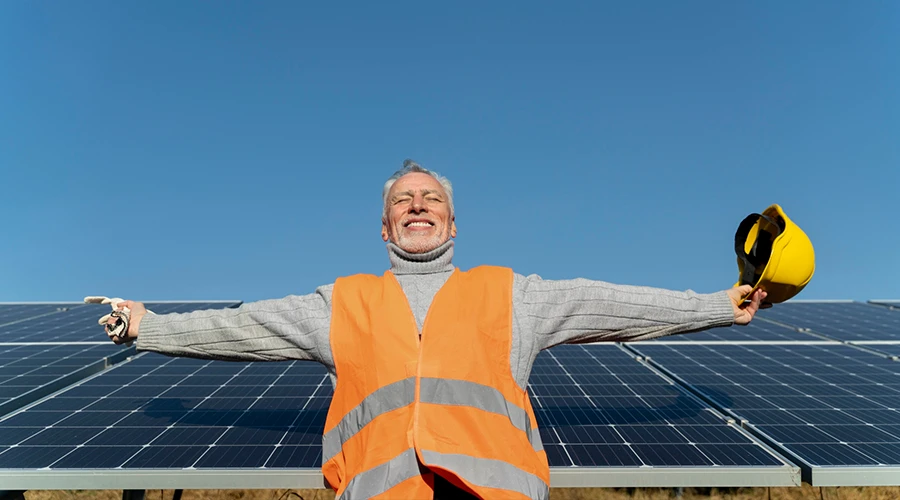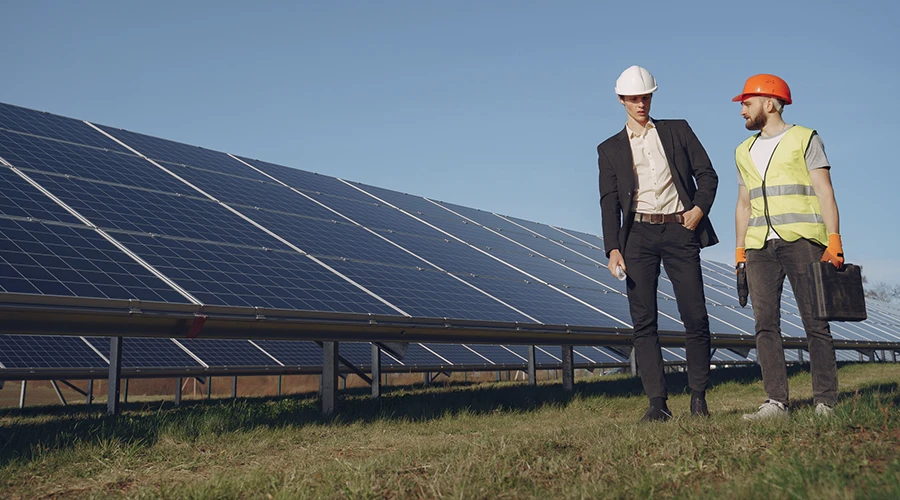Want to Know If the New Solar Battery Rebate Sunshine Coast Makes 2025 the Best Time to Buy?
The big question on the Sunshine Coast right now isn’t whether rebates are coming… because they’re already here. Yay! What homeowners are really asking is: “Does the new rebate make this the best time to install a solar battery?”
I’d have to say “yes!”
With power bills climbing and blackouts more common, the Federal Government’s 2025 Battery Rebate couldn’t have arrived at a better time. Let’s look at how it works and whether now really is the smart time to act.
How the 2025 Federal Battery Rebate Works
The 2025 rebate has been designed to make battery storage more affordable for homeowners. The rules are straightforward enough, but it helps to see them in plain English.
- You don’t need a brand-new solar system to qualify: You can add a battery to an existing setup.
- Systems between 5 kWh and 100 kWh are eligible, which covers most households.
- What you need to know is that the rebate only applies to the first 50 kWh of usable battery capacity. So, while you can install a larger system, you’ll only receive subsidy support for up to 50 kWh. To be hones, most people are not installing such big systems.
- In the most basic of terms: You can install up to 100 kWh, but you can’t claim more than the 50-kWh subsidy cap.
- You could save up to $3,720 on a 10-kWh battery.
- The install must be completed by a CEC-accredited installer (that’s us at SWIFT Solar).
All government schemes have limited funding. Once the pool of money runs dry, applications will close. That’s why waiting too long can backfire if demand is high. And believe, we’re pretty busy installing batteries, so my recommendation would be to act now if you’re interested.
The Numbers: With vs Without Rebate
Let’s play with some real numbers.
- 10 kWh battery, typical cost before rebate: around $10,500
- Rebate saving: $3,720
- Final price: just under $7,000
That’s not small change. For a lot of families, the rebate tips the balance from “maybe one day” to “let’s do it now.”
And because a battery lets you use more of your own solar power, especially during the expensive evening peak from 4pm–9pm, the savings do add up faster. Payback periods that used to sit around 8–10 years can drop closer to 5. Mind you, it’s not payback that really matters, it’s usually cashflow and the feeling you get from having a good degree of energy independence. After all, you never talk about the purchase of a car in terms of “payback.”
Pros and Cons of Rebates
Like most government incentives, there are upsides and a few things to watch out for.
Benefits
- Lower upfront cost (thousands saved straight away).
- Faster return on investment.
- More families can afford storage and energy independence.
Challenges
- Applications involve paperwork and eligibility checks. (SWIFT will do that for you!)
- Funding is capped, so spots run out quickly.
- Some people hold off too long, and miss the window. Don’t risk it.
The key is not to overthink it: if a battery makes sense for your home, the rebate is the icing on the cake.
Sunshine Coast Case Study
Take the Singh family from Buderim. They’d been talking about a battery for years but couldn’t justify the upfront cost. When the rebate kicked in, they jumped at the opportunity and called me to take them through the process.
We installed a 10 kWh AC-coupled battery to work with their existing system. Their total cost dropped by nearly $4,000 thanks to the rebate.
Now, they enjoy reliable backup power and cheaper bills, and they completely avoid peak tariffs. They’ve stopped worrying about using grid power between 4pm and 9pm (I like to call that the danger zone!) and they never pay those high power prices. Their only regret? Not doing it sooner. 😉
So, Should You Act Now or Wait?
Look, if you’ve been on the fence about installing a battery (either a new solar system or adding to an existing one) then I would suggest that it’s a good time, right now. With the rebate already active, the real risk isn’t waiting for something better, it’s missing out altogether. Funding pools are capped, and once the allocation is gone, that’s it.
When you combine the rebate with smarter battery tech and rising energy costs, 2025 is shaping up as one of the best years yet to make the jump.
The important thing is to confirm your eligibility and get your application in before the funding pool closes. Just call me on 0412 251 734. It will only take a couple of minutes to get your started.
FAQs
Q: Can I get the rebate if I already have solar?
Yes, you don’t need a new solar system. You just need a compliant battery install.
Q: Do rebates apply to all battery brands?
Only those approved under the scheme. At SWIFT we only install compliant, trusted brands.
Q: Will I get knocked back if my system is older?
Not necessarily. Older systems can often work with an AC-coupled battery. We’ll check your setup first.
Q: Is there an income test for eligibility?
At this stage, no. Most Sunshine Coast households qualify.
Are you ready to find out if you’re eligible? Call SWIFT Solar on 0422 251 734 or fill out our online contact form. We’ll confirm your rebate options and help you take the next step toward energy independence.



